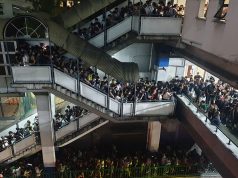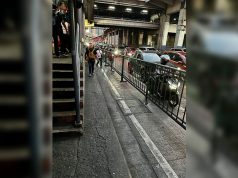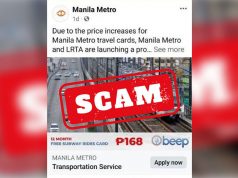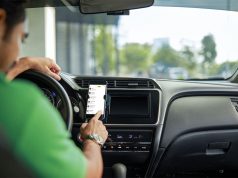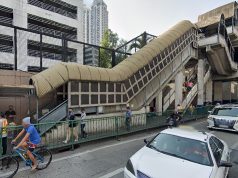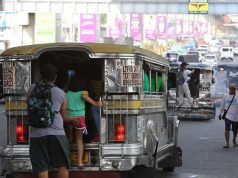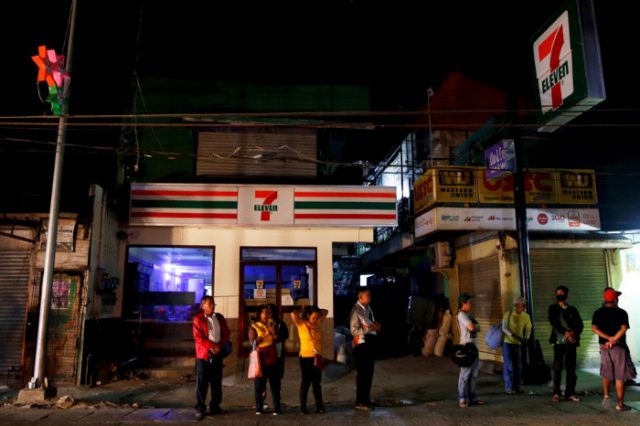
Presidential spokesperson Salvador Panelo‘s infamous remark about leaving home early to supposedly avoid heavy traffic met criticisms from the commuting public.
His remarks were in reaction to the claims of Renato Reyes Jr., secretary-general of the left-leaning Bagong Alyansang Makabayan (BAYAN), that the Philippines is currently suffering from a mass transport crisis.
Reyes argued that the Philippines is already facing a transportation crisis when three trains broke down in a span of a week, paralyzing the daily commute of workers and students alike.
But Panelo does not perceive it that way, and claimed that the transportation system is even improving.
“Ano bang ibig nilang sabihin nila na transportation crisis? Ang nakikita ko lang traffic. May transportation naman ah, nakakasakay naman tayong lahat,” Panelo said at a press conference.
“Nakakarating pa naman ang mga dapat makarating sa kanilang dapat papuntahan. May solusyon naman dun, if you want to arrive early (at) your destination, then you go there earlier,” Panelo continued.
What commuters really encounter
Panelo’s remarks unsurprisingly provoked Filipinos, many of whom have actually been leaving early to get to work. Despite this, they still meet hours-long traffic jams affecting their personal lives.
Imagine Panelo telling people who actually commute to leave early as if they don't do that already. Nakakainit ng dugo. I know some co-workers who leave 3 to 4 hours ahead of their shift and still arrive late. THERE IS CRISIS PANELO.
— Nezukoooooo-chaaaaaan~ (@maengomilktea) October 9, 2019
Another Filipino who works in Makati said it would take him three hours to travel from his residence in Cavite.
“I live in Cavite and work in Makati. On Mondays, I wake up at 4 a.m., leave the house at 5 a.m., only to arrive in the office at 8 a.m. That’s a 3-hour travel,” he wrote.
“Mind you, hindi pa pumuputok ang araw nung umalis ako. To many people, maaga na ‘yun. Ano ba ang concept ni Panelo ng “early”???” the user added.
This was reiterated by another user, who said that the government should address the problems of the LRT and issues about vehicular congestion first.
Panelo: “If you want to arrive early, leave early”
Such a insensitive comment for us people.The truth is maski naman gumising at umalis kami ng maaga nalalate parin kami dahil sa traffic eh.
Ayusin niyo muna yung LRT at yung traffic bago ka magcomment ng ganyan.— Dan Clemente/#42 Kabataan Partylist/#LabanBayan (@DSnow2018) October 9, 2019
Another Twitter user, who regularly travels from Fairview in Quezon City to Manila, said that despite all the adjustments she makes, the daily commute is not made easier.
“From 2017 up to this day, if I so wanted to be on time with my schedules in Manila, I have to allot AT LEAST 2 to 3 hours for my travel time. Atty. Panelo, please do not assume that commuters are not trying to leave earlier to arrive on time. We do. But the traffic is bad,” she said.
“Please do not assume that us commuters are not trying to take alternative routes or even methods of transportation. Because regardless of the means, we’re still stuck in the midst of a traffic jam. What we need is a solution to our INCREASED TRAFFIC VOLUME,” the user added.
Try mo kaya mag commute, literally mag commute!!! 🤔🙄 anong leave earlier, 3hours na ang allowance fr marikina to…
Posted by Cha Cunanan on Tuesday, October 8, 2019
A Facebook user, who shared that her three-hour travel from Marikina to Mandaluyong used to take 45 minutes, offered ways on how to ease traffic congestion in the metro.
“Isabatas niyo na wala ng Metro Manila at provincial rate sa salary at magtayo ng negosyo, factory, malls, kainan at condo sa mga probinsya para ‘yung mga taga-probinsya, ‘di na need pumunta Manila to work, (dahil) same rate. Nakikita pa nila pamilya nila araw araw… ‘yan, for sure, maiibsan ang trapik!!!!!” she wrote.
Panelo, after earning the ire of many Filipino commuters, conceded and said that he would commute on October 11, Friday on his way to work at Malacañang.
“The challenge to commute is accepted. This coming Friday, I’ll take the jeepney and the LRT in going to work,” he said to reporters.
The Palace is located in San Miguel, Manila while the presidential spokesperson reportedly resides in Marikina City. Taking the LRT-2 is the fastest way to reach Manila from the eastern side of the metro.
His response was welcomed by groups and some personalities, particularly BAYAN chief Reyes who dared him to take public transportation without bodyguards and without receiving special treatment.
“Let’s make it worthwhile. No hawi boys. No bodyguards. No special treatment. No waiting cars. During rush hour, like the rest of the suffering commuters,” the activist leader said.
A glimpse at the plight of Metro Manila workers and residents
Waking up early and allotting a significant amount of time for travel itself has been the practice of daily commuters, especially those living in the metro.
Two years ago, an English language trainer told Philstar.com that she leaves her house three hours early to arrive in time for her 8 a.m. office shift at Ortigas Center.
The commute, she shared, has taken a toll on both her health and family relationships.
Marnely Portelo said that she has experienced difficulties in breathing and physical pain in her back because of the uncomfortable trip she has to endure on a daily basis.
“Usually it (the commute) should take, like, at least an hour, but right now, because of the heavy traffic, it takes me three hours. So waking up at five, that won’t work. So I need to wake up earlier than that because I have to leave the house at five o’clock [to reach our office at 8],” Portelo disclosed.
She is among the millions of Filipinos who regularly brave the traffic in the metro which has grown worse this year, according to the Metropolitan Manila Development Authority.
The MMDA found that the daily volume of vehicular traffic on major thoroughfare EDSA from January to August 2019 has already exceeded last year’s day-to-day average volume during the expectedly congested Christmas season.
As of August, 405,000 vehicles ply EDSA daily. In December 2018, it only amounted to an average of 402,000, traffic chief Bong Nebrija said.
MMDA enumerated the top five reasons why the metro continues to suffer from road congestion, namely:
- Saturated demand,
- Mixed traffic with pedestrians,
- Public utility jeepneys loading and unloading passengers in intersections,
- Unruly driving behavior of motorists and
- Illegal roadside parking
The MMDA culled the data from Metro Manila’s local government units.




